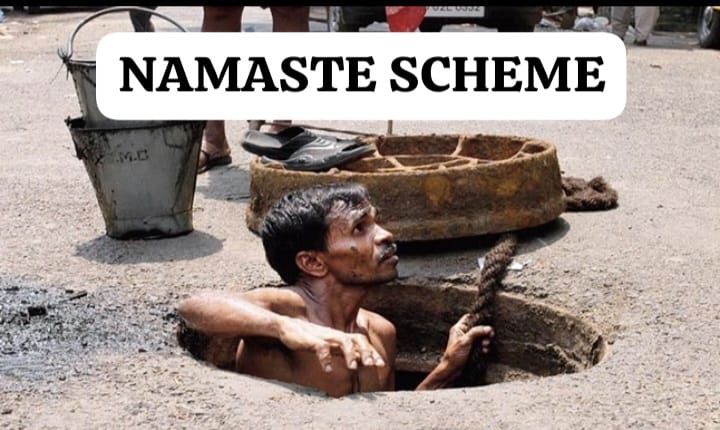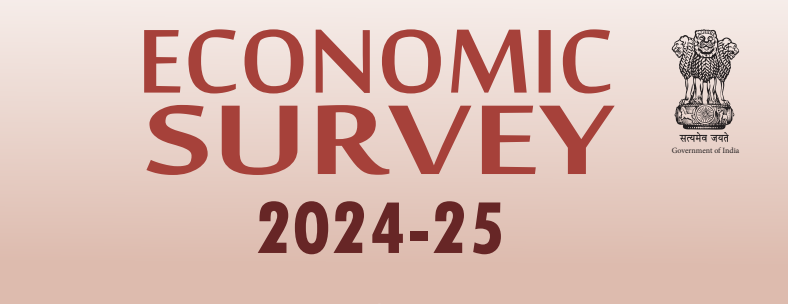
The Namaste Scheme is a government initiative launched by the Ministry of Social Justice and Empowerment and the Ministry of Housing and Urban Affairs in 2022 is a Central Sector Scheme with the aim of improving the socio-economic conditions of sanitation workers. The scheme’s focus is to enhance occupational safety and ensure the dignity of sanitation workers by providing proper training, health benefits, and protective gear to prevent manual scavenging.
Main features of the Scheme:
-
- Identification: NAMASTE envisages identifying the Sewer/Septic Tank Workers (SSWs).
- Occupational Training and Distribution of PPE Kits to Specified Skilled Workers.
- Assistance for Safety Devices to Sanitation Response Units (SRUs).
- Extending Health Insurance Scheme Benefits to identified SSWs and their families under the Ayushman Bharat- Pradhan Mantri Jan Arogya Yojana (AB-PMJAY).
- Livelihood Assistance: The Action Plan will promote mechanization and enterprise development by providing funding support and subsidy (capital +interest) to the sanitation workers, to procure sanitation-related equipment.
- IEC Campaign: Massive campaigns would be undertaken jointly by the urban local bodies & National Safai Karamcharis Finance and Development Corporation to spread awareness about the interventions of NAMASTE.
Important data on Manual Scavenging in India:
-
- Identification of Manual Scavengers:
- As of March 2023, Ministry of Social Justice and Empowerment data shows that 58,098 manual scavengers have been officially identified across India. However, independent studies and activists claim this number could be higher, with estimates suggesting there may be as many as 8 million people still engaged in manual scavenging due to underreporting.
- Fatalities in Sewer Cleaning:
- According to government figures, over 500 deaths were reported between 2017 and 2022 due to hazardous sewer cleaning, with fatalities from suffocation and exposure to toxic gases. In 2022 alone, more than 50 deaths occurred during manual cleaning of sewers and septic tanks.
- The National Commission for Safai Karamcharis (NCSK) highlighted that year-on-year deaths continue despite legal prohibitions, with the highest number of deaths reported in states like Tamil Nadu, Gujarat, Uttar Pradesh, and Delhi.
- Prohibition and Rehabilitation:
- Since the passage of the Prohibition of Employment as Manual Scavengers and their Rehabilitation Act, 2013, more than $3.6 million USD (₹300 crore) has been allocated for rehabilitation. Yet, only a fraction of identified manual scavengers have been rehabilitated successfully.
- According to the Ministry of Social Justice and Empowerment, only around bunder the Self-Employment Scheme for Rehabilitation of Manual Scavengers (SRMS) as of 2023, indicating gaps in outreach and implementation.
- Technological Interventions:
- The Ministry of Housing and Urban Affairs reported that 9,894 mechanized cleaning machines have been introduced across urban local bodies as part of efforts to eliminate manual scavenging by 2025. However, a recent 2023 report from the NGO Safai Karamchari Andolan states that many of these machines remain non-operational due to poor maintenance and funding issues.
- State-wise Data:
- States like Uttar Pradesh and Maharashtra have the highest number of manual scavengers, with Uttar Pradesh alone accounting for 27,000 individuals identified as still engaged in the practice.
- Some states, like Kerala and Sikkim, report no cases of manual scavenging due to better enforcement and awareness programs.
- Identification of Manual Scavengers:
The Namaste Scheme is a crucial step towards eradicating the dehumanizing practice of manual scavenging and improving the lives of sanitation workers in India. By focusing on identification, skill development, and mechanization, the initiative aims to address both the immediate safety concerns and the long-term rehabilitation of workers
Spread the Word



